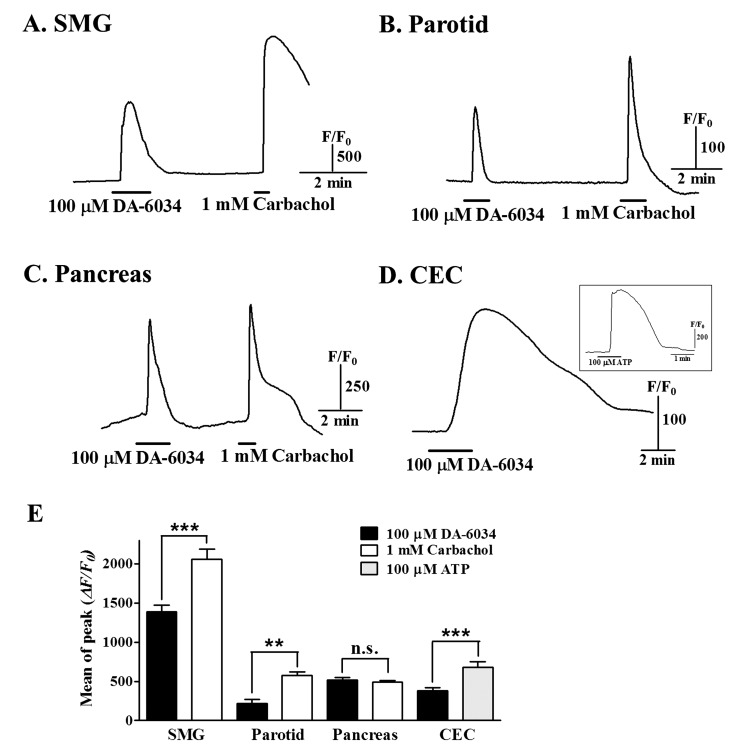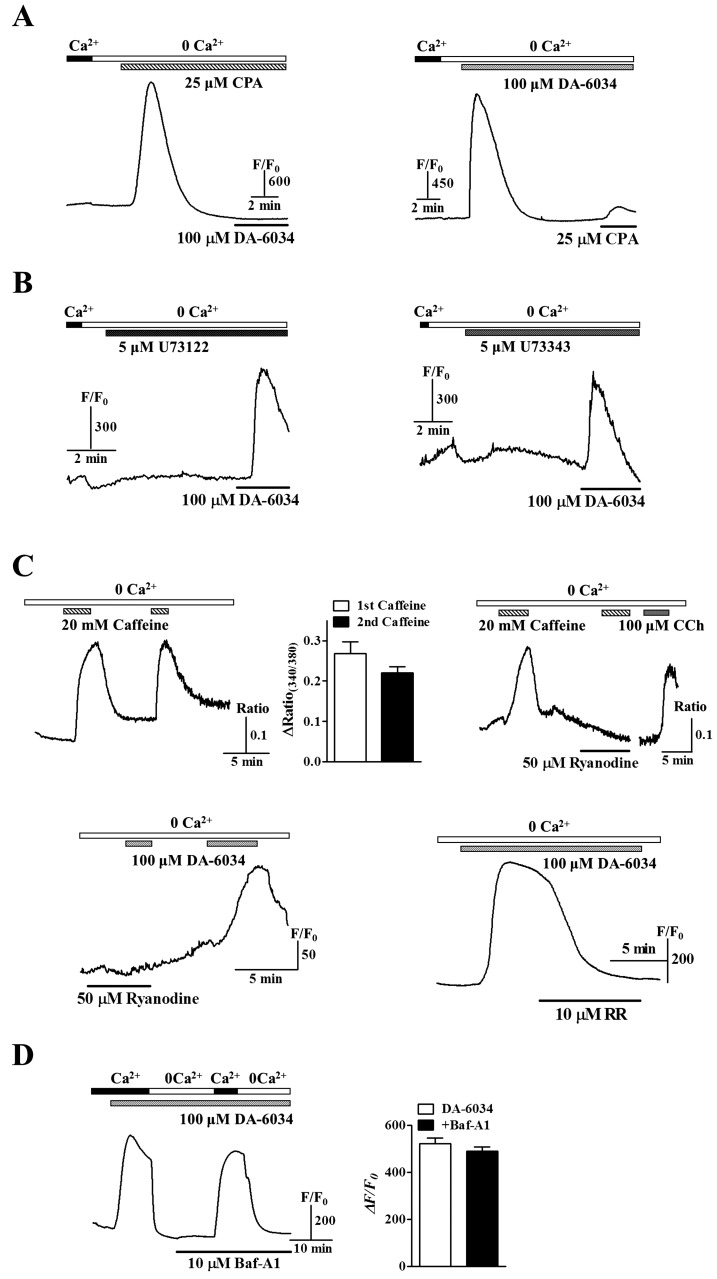1. Petersen OH, Tepikin AV. Polarized calcium signaling in exocrine gland cells. Annu Rev Physiol. 2008; 70:273–299. PMID:
17850212.

2. Melvin JE, Yule D, Shuttleworth T, Begenisich T. Regulation of fluid and electrolyte secretion in salivary gland acinar cells. Annu Rev Physiol. 2005; 67:445–469. PMID:
15709965.

3. Aluru SV, Agarwal S, Srinivasan B, Iyer GK, Rajappa SM, Tatu U, Padmanabhan P, Subramanian N, Narayanasamy A. Lacrimal proline rich 4 (LPRR4) protein in the tear fluid is a potential biomarker of dry eye syndrome. PLoS One. 2012; 7:e51979. PMID:
23272196.

4. Cheng EY, Goss CH, McKone EF, Galic V, Debley CK, Tonelli MR, Aitken ML. Aggressive prenatal care results in successful fetal outcomes in CF women. J Cyst Fibros. 2006; 5:85–91. PMID:
16650742.

5. Ferrándiz ML, Alcaraz MJ. Anti-inflammatory activity and inhibition of arachidonic acid metabolism by flavonoids. Agents Actions. 1991; 32:283–288. PMID:
1650522.

6. Li BQ, Fu T, Gong WH, Dunlop N, Kung H, Yan Y, Kang J, Wang JM. The flavonoid baicalin exhibits anti-inflammatory activity by binding to chemokines. Immunopharmacology. 2000; 49:295–306. PMID:
10996027.

7. Sadik CD, Sies H, Schewe T. Inhibition of 15-lipoxygenases by flavonoids: structure-activity relations and mode of action. Biochem Pharmacol. 2003; 65:773–781. PMID:
12628491.

8. Choi SM, Shin JH, Kang KK, Ahn BO, Yoo M. Gastroprotective effects of DA-6034, a new flavonoid derivative, in various gastric mucosal damage models. Dig Dis Sci. 2007; 52:3075–3080. PMID:
17406830.

9. Kim YS, Son M, Ko JI, Cho H, Yoo M, Kim WB, Song IS, Kim CY. Effect of DA-6034, a derivative of flavonoid, on experimental animal models of inflammatory bowel disease. Arch Pharm Res. 1999; 22:354–360. PMID:
10489873.

10. Kim EJ, Chung MY, Chung HJ, Son MW, Kwon JW, Yoo M, Lee MG. Pharmacokinetics of 7-carboxymethyloxy-3',4',5-trimethoxy flavone (DA-6034), a derivative of flavonoid, in mouse and rat models of chemically-induced inflammatory bowel disease. J Pharm Pharmacol. 2006; 58:27–35. PMID:
16393461.

11. Ko SH, Yoo DY, Kim YJ, Choi SM, Kang KK, Kim H, Kim N, Kim JS, Kim JM. A mechanism for the action of the compound DA-6034 on NF-κB pathway activation in Helicobacter pyloriinfected gastric epithelial cells. Scand J Immunol. 2011; 74:253–263. PMID:
21623862.

12. Lee JS, Kim HS, Hahm KB, Sohn MW, Yoo M, Johnson JA, Surh YJ. Inhibitory effects of 7-carboxymethyloxy-3',4',5-trimethoxyflavone (DA-6034) on Helicobacter pylori-induced NF-kappa B activation and iNOS expression in AGS cells. Ann N Y Acad Sci. 2007; 1095:527–535. PMID:
17404066.
13. Choi SM, Lee YG, Seo MJ, Kang KK, Ahn BO, Yoo M. Effects of DA-6034 on aqueous tear fluid secretion and conjunctival goblet cell proliferation. J Ocul Pharmacol Ther. 2009; 25:209–214. PMID:
19456255.

14. Choi SM, Seo MJ, Lee YG, Lee MJ, Jeon HJ, Kang KK, Ahn BO, Yoo M. Effects of DA-6034, a flavonoid derivative, on mucin-like glycoprotein and ocular surface integrity in a rabbit model. Arzneimittelforschung. 2009; 59:498–503. PMID:
19998577.

15. Seo MJ, Kim JM, Lee MJ, Sohn YS, Kang KK, Yoo M. The therapeutic effect of DA-6034 on ocular inflammation via suppression of MMP-9 and inflammatory cytokines and activation of the MAPK signaling pathway in an experimental dry eye model. Curr Eye Res. 2010; 35:165–175. PMID:
20136427.

16. Jo H, Byun HM, Lee SI, Shin DM. Initiation site of Ca
2+ entry evoked by endoplasmic reticulum Ca
2+ depletion in mouse parotid and pancreatic acinar cells. Yonsei Med J. 2007; 48:526–530. PMID:
17594163.
17. Yang YM, Jung HH, Lee SJ, Choi HJ, Kim MS, Shin DM. TRPM7 Is Essential for RANKL-Induced Osteoclastogenesis. Korean J Physiol Pharmacol. 2013; 17:65–71. PMID:
23440520.

18. Zeng W, Lee MG, Yan M, Diaz J, Benjamin I, Marino CR, Kopito R, Freedman S, Cotton C, Muallem S, Thomas P. Immuno and functional characterization of CFTR in submandibular and pancreatic acinar and duct cells. Am J Physiol. 1997; 273:C442–C455. PMID:
9277342.

19. Park S, Lee SI, Shin DM. Role of regulators of g-protein signaling 4 in Ca
2+ signaling in mouse pancreatic acinar cells. Korean J Physiol Pharmacol. 2011; 15:383–388. PMID:
22359476.
20. Vermassen E, Parys JB, Mauger JP. Subcellular distribution of the inositol 1,4,5-trisphosphate receptors: functional relevance and molecular determinants. Biol Cell. 2004; 96:3–17. PMID:
15093123.

21. Frizzell RA, Hanrahan JW. Physiology of epithelial chloride and fluid secretion. Cold Spring Harb Perspect Med. 2012; 2:a009563. PMID:
22675668.

22. Haddad JJ. Redox regulation of pro-inflammatory cytokines and IkappaB-alpha/NF-kappaB nuclear translocation and activation. Biochem Biophys Res Commun. 2002; 296:847–856. PMID:
12200125.
23. Rottner M, Freyssinet JM, Martínez MC. Mechanisms of the noxious inflammatory cycle in cystic fibrosis. Respir Res. 2009; 10:23. PMID:
19284656.

24. Yamamori E, Iwasaki Y, Oki Y, Yoshida M, Asai M, Kambayashii M, Oiso Y, Nakashima N. Possible involvement of ryanodine receptor-mediated intracellular calcium release in the effect of corticotropin-releasing factor on adrenocorticotropin secretion. Endocrinology. 2004; 145:36–38. PMID:
14592949.

25. Lin F, Xin Y, Wang J, Ma L, Liu J, Liu C, Long L, Wang F, Jin Y, Zhou J, Chen J. Puerarin facilitates Ca
2+-induced Ca
2+ release triggered by KCl-depolarization in primary cultured rat hippocampal neurons. Eur J Pharmacol. 2007; 570:43–49. PMID:
17610871.
26. Hartzell C, Putzier I, Arreola J. Calcium-activated chloride channels. Annu Rev Physiol. 2005; 67:719–758. PMID:
15709976.









 PDF
PDF ePub
ePub Citation
Citation Print
Print


 XML Download
XML Download